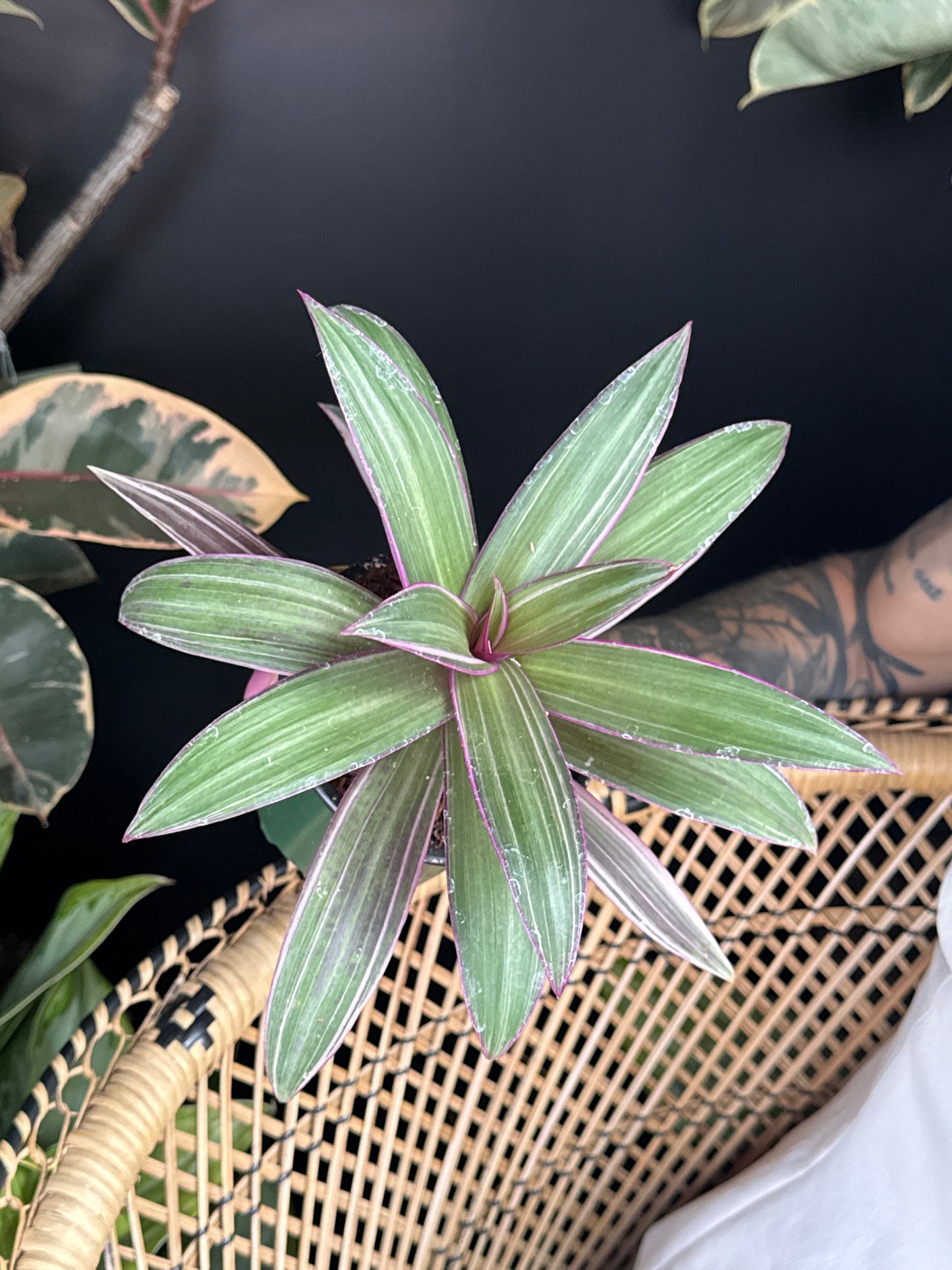1
/
of
1
Moses in a Boat Variegated (Syngonium podophyllum 'Variegatum')
Moses in a Boat Variegated (Syngonium podophyllum 'Variegatum')
Moses in a Boat Variegated (Syngonium podophyllum ‘Variegatum’)
Bring a wave of color and character to your space with the Moses in a Boat Variegated, a vibrant Syngonium variety featuring arrow-shaped leaves patterned in cream, white, and green. Its lush variegation and trailing growth habit make it a standout addition to plant shelves, hanging planters, or tabletop displays.
Easy to grow and full of personality, this adaptable plant thrives in bright, indirect light and adds effortless style to any collection—perfect for both new plant parents and seasoned growers looking for a touch of tropical flair.
Sizing Description:
Small: 4" / 10cm pot diameter
Regular price
$10.99
Regular price
Sale price
$10.99
Unit price
/
per
Couldn't load pickup availability
Sun Requirements ▾
Prefers bright, indirect light. It can tolerate low light but will exhibit more vibrant colors and better growth in a brighter location. Avoid direct sunlight, which can scorch the leaves.
Watering Instructions ▾
Keep the soil consistently moist but not waterlogged. Water when the top inch of soil feels dry. Ensure good drainage to prevent root rot.
Care Tips ▾
Humidity: Thrives in moderate to high humidity. To increase humidity, use a humidity tray, a room humidifier, or mist the plant regularly. It adapts well to average indoor humidity but will appreciate additional moisture.
Temperature: Enjoys temperatures between 60-80°F (15-27°C). Avoid exposure to temperatures below 50°F (10°C) and protect the plant from cold drafts.
Fertilizer: Feed with a balanced, liquid houseplant fertilizer every 4-6 weeks during the growing season (spring and summer). Reduce feeding in fall and winter when growth slows
Share





